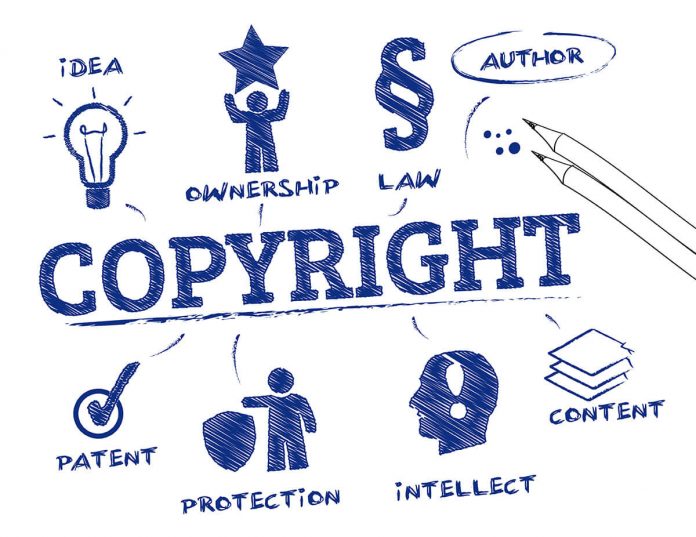This article is written by Jisha Garg, a student currently pursuing B.A.LLB (Hons.) from the Rajiv Gandhi National University of Law, Punjab. This is an exhaustive article dealing with the question of whether unpublished works have the copyright or not. The article deals with this question and explains it concerning the provisions of the Copyright Act, 1957. The article also encompasses the aspect of fair use of the copyrighted material.
Table of Contents
Introduction
Without the protection of one’s ideas, works or innovation, individuals, companies or businesses will neither gain reputation nor reap any other benefit for one’s labour and work and hence will then focus less on doing something new as there is no guarantee of it to be in his name. So, we have the Intellectual Property Rights which through copyright, patent and trademarks, geographic indications, trade secrets, industrial designs. allow the owner to have the monopoly over his creation and thus fosters innovation. Copyright is the legal term used to define the rights of the creator over his literary and artistic works.
Copyright and its need
The dictionary meaning of the word Copyright is ‘a person’s exclusive right to reproduce, publish or sell his original work.’ This original work includes music, art, literature, dramatic or artistic work etc. Section 14 of Copyright Act, 1957 defines the use of word Copyright in respect to different works in case of literary, music or artistic work; in case of a computer programme; in case of artistic work; in case of cinematographic film and in case of a sound recording. Copyright law protects the material forms or the tangible works i.e how the ideas are presented (something original written on a paper or an original song recorded, etc.) and not the ideas, concepts, techniques or facts.
Copyright protection is essential as the work of the creator is his potential asset. He has invested his imagination, resources and labour to come up with something of his own which may in future reward him with some financial or other gains. Hence, copyright is necessary to prevent any other third party to take its advantage. If someone uses your copyright material, you have legal grounds to complain against the person, ask for the compensation and stop him from using it any further.
How to register for a copyright
Registering for copyright is not must to secure copyright protection however registering has its benefits attached to it. To register any material under copyright law the application must be made online. All the documents needed and the online application is submitted after filling the particulars along with details of the publication and the formal requisite fees. After the filing, the application is evaluated by the registrar of Copyright to check if every detail is appropriate and the work is original. If there is some objection the applicant is asked to rectify in a particular period and if not, copyright is registered and the applicant is sent the extract from the register. The process may take 10 to 12 months in its competition.
In the cases of literary dramatic or artistic work, the duration of copyright is the lifetime of the author and 60 years forward counted from his death and in cases of cinematographic films, sound recordings and publications it is 60 years from the date of publication.
Rights of a copyright holder
Copyright Act gives the copyright owner certain rights which are bestowed to a non-registered copyright owner as well but he will face inherent difficulties while proving his work in the court of law. The exclusive rights of the creator include: reproducing the original work, creating the derivative works, importing, exporting or selling the work and publishing the work to earn financially and socially. He further has the right to sell his copyright to someone else or allow someone else to use his material with due credits. In the cases of a creator working under some other individual or the company then the owner or the company will have the copyright and not the owner.
Section 16 of the Copyright Act and case law
Section 16 of the Indian Copyright Act, 1957 provides that irrespective of the fact that the work is published or not, no person shall be entitled to copyright any work except for the provisions laid down in this section. The Supreme Court made some observations regarding the interpretation of this Section. The Court held that any work by a person which fulfils the criteria for qualifying as copyright is considered as a fruit of his labour and hence should be duly protected. Further, the Court also observed that it is a social requirement that the right owners get their works published so that their work gets maximum reach.
A crucial question that arose was if a third person publishes an unpublished work without the consent of the owner, would there be no remedy available to the owner of such work? The court observed that Section 16 prevents the third person from abrogating the owner’s right to prevent a breach of trust or confidence.
Therefore, it was finally held that Section 16 was enacted to protect the owners of copyright irrespective of the fact that whether the work is published or not.
Copyright of unpublished works
The registration of the copyright is not essential to have copyright but even prompt is that the publication is not necessary. You have a copyright over the piece of poetry you wrote on a paper and then put it in your drawer. According to Section 13 of the Copyright Act, 1957, copyright can be of any original material and there is no provision which specifies publication as a requirement hence publication is not a prerequisite for having a copyright on your material. A work gains copyright as soon as it is written and being shared and appreciated by others is never a condition.
What comprises an unpublished work
Publication word is defined in the Act as work available to the public through communication or issuing of copies. Statutory issues may prevail in this situation and it needs to be checked by the laws. Provisions of the Act provide for these sections and hence may preserve the laws related to unpublished works. Analysing Section 52, it is not only that which is not open to the public is unpublished but also sometimes that which is available to the public. Giving a wider view to the explanation of Section 31, mere knowledge of the existence of work to a few people does not amount to publication if it is not known to a large number of people through copies or communication but showing the material to a few friends for consumption will amount to publication. The publication is not dependent on the number of people but the use of it.
According to Section 6, the decision of the appellate board is final on whether the work is published or not.
The rationale behind it
The question that is often raised is that what is the purpose behind granting copyright to unpublished work if the work is not made available to the public and hence is of no benefit to the society? The rationale behind this was to protect the owner’s labour so that a third person could not misappropriate their work through illegal means. However, if the work created is lying idle and is not published, it becomes very difficult to prove it in the court of law in case there is an infringement.
Term of copyright in unpublished works
Although the publication is not a criterion for the subsistence of copyright and creation is, as per Section 22 of the Copyright Act the term of copyright depends on the date of publication and the factum. Therefore, to determine the copyright term of works, the question of when a work is published becomes important.
Non-compulsory registration
Although registration acts as a prima facie evidence while claiming Copyright protection in a court of law, it is not a prerequisite to avail copyright protection. This was held in the case of Asian Paints v. Jaikishan Paints & Allied Products. In this case, the Bombay High Court ruled that registration of a copyright is optional and not compulsory and copyright persists as soon as the work is created and given a material form. Registration in such a case is an optional approach.
Section 44 of the Copyright Act, 1957 provides for registration of a work in which copyright subsists but it is not necessary to claim copyright. Division Bench of the Madhya Pradesh High Court in the R.G. Anand case held that under the Copyright Act, 1957, registration is a prerequisite to claiming copyright of the work produced. The judgement, in this case, was superseded by the Supreme Court. The apex court held that registration of a work is not a condition to avail copyright protection and evolved the principle of ‘automatic protection’.
Use of unpublished work without permission from the copyright holder
The purpose or character of the use
Copyright of the unpublished work could be provided without the owner’s permission after careful examination as to how the copyrighted work is used and in what context. Some examples of fair use include “news reporting, criticism, teaching, research and scholarship. However, this is not an inclusive list and more things may be added to the list and the existing things be altered. Mostly, the courts consider non-commercial uses as fair use as opposed to commercial uses. The courts have also started examining if the work adds something new, with a different character, altering it with new meaning or expression or does it merely supersede the original work.
The nature of the copyrighted work
The courts also take notice of whether the work used is creative or merely factual. Courts generally give more protection to the works that are highly creative and are closer to the core of copyright protection.
The amount and substantiality of the portion used
There is no specific amount of work which can be categorised as fair use or unfair use. Some of the determining factors include- the amount of copyright material used, the relative importance of the portion of the work used as compared to the whole and lastly, was the amount used justified by the character and purpose of the use.
The effect of the use
In this factor, the court assesses to what extent and how the use of the copyrighted material damages the potential market for the already existing material. Courts have recognised that where uses are highly transformative under the first factor, the affected markets receive less protection.
Conclusion
Copyright is provided to the creator of any exceptional literary, music or artistic work to protect the creator’s work from being misused by a third person. Copyright promotes and encourages innovation in society. The act which governs it is known as the Copyright Act, 1957. Mostly, the copyrighted material is published to make it available to the general public so that they are aware of the innovation and it contributes towards a better society. The question arises when a particular creation is unpublished. What would happen if I write a novel and keep the manuscript in the drawer of my study table? Would it have any copyright? The copyright act provides for such a scenario. The Act mentions that even if the creation is not published i.e. it is not made available in the public domain; even then the product would be considered copyrighted. In such a case, the person infringing the rights of the copyright holder would be subjected to a similar penalty as in the case of published work. The rationale behind protecting unpublished work was to protect the interests of the maximum number of people and encourage them to contribute to more such innovations in the future.
References
LawSikho has created a telegram group for exchanging legal knowledge, referrals and various opportunities. You can click on this link and join:












